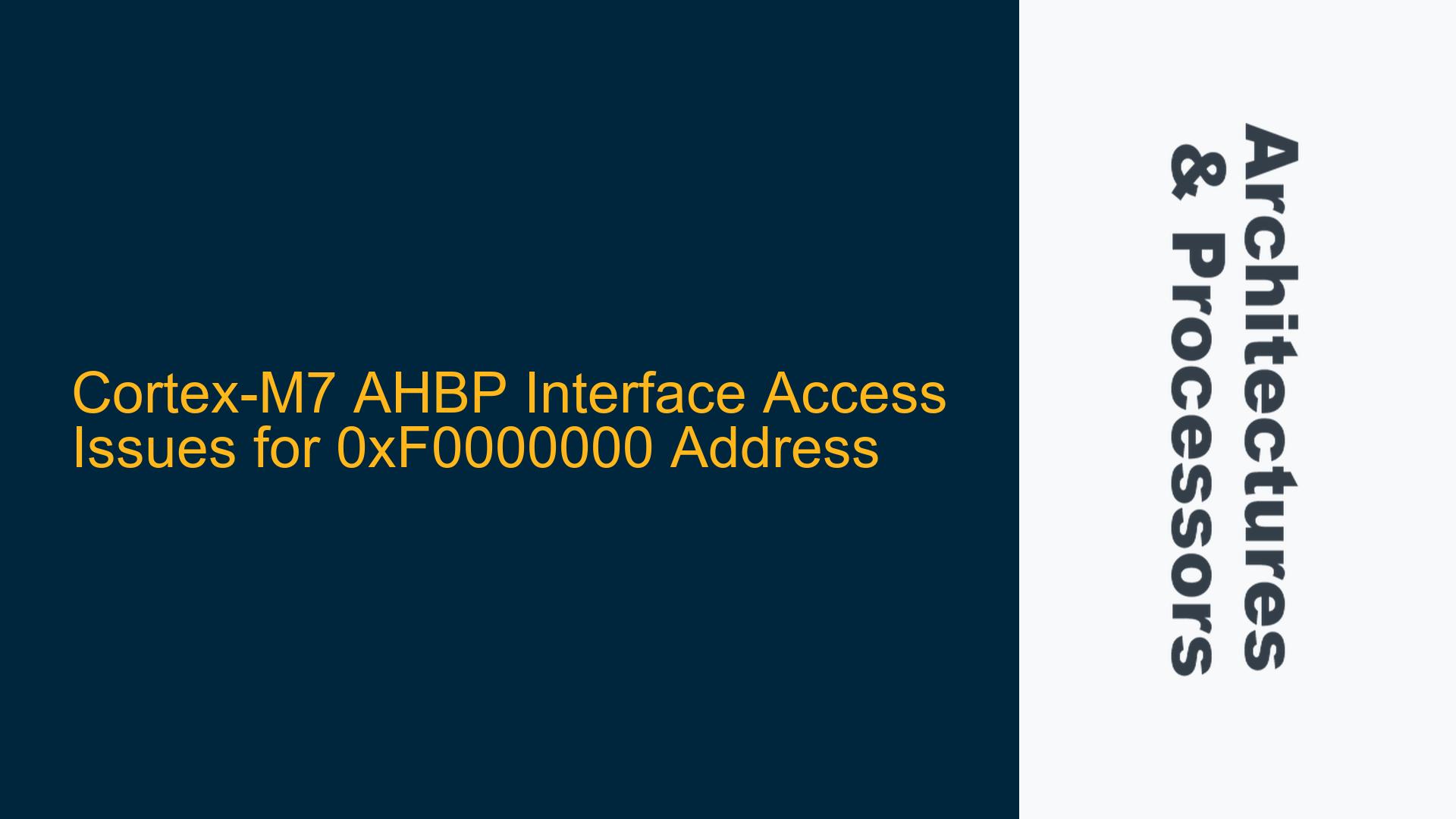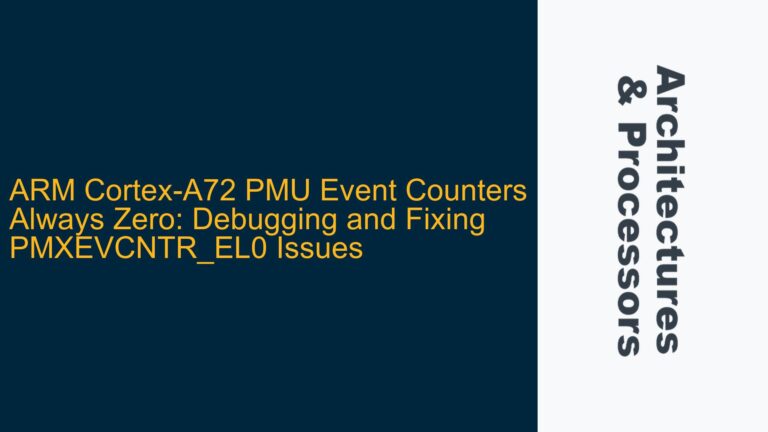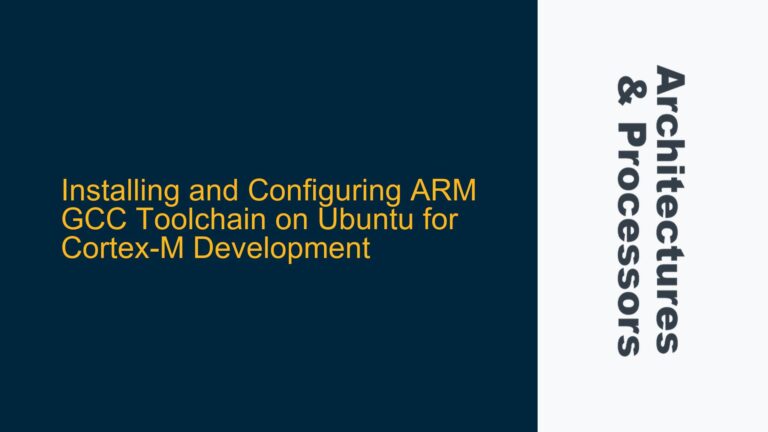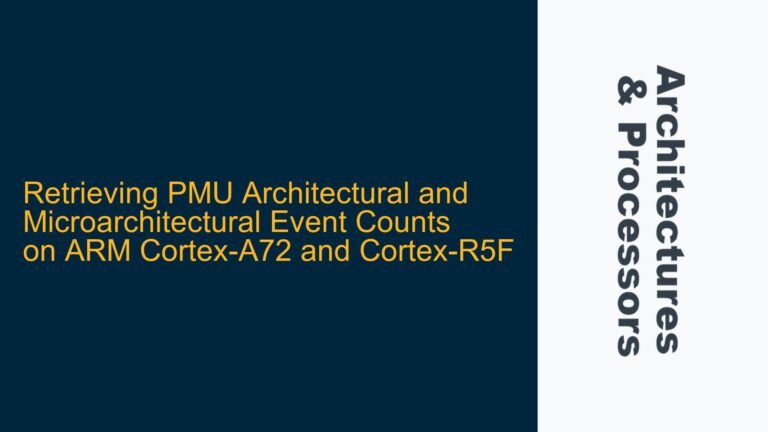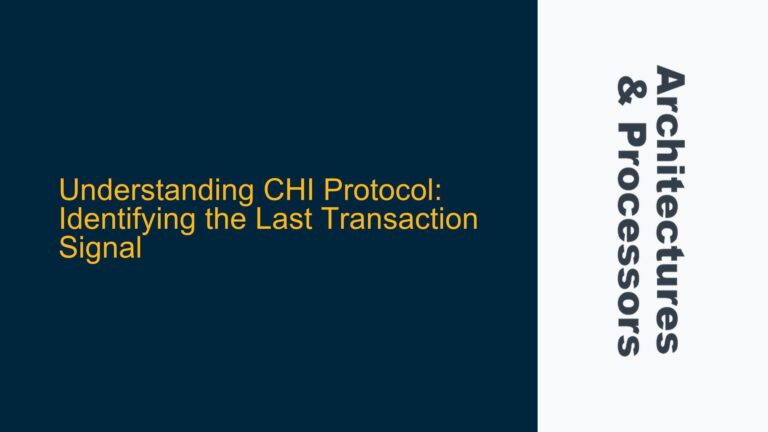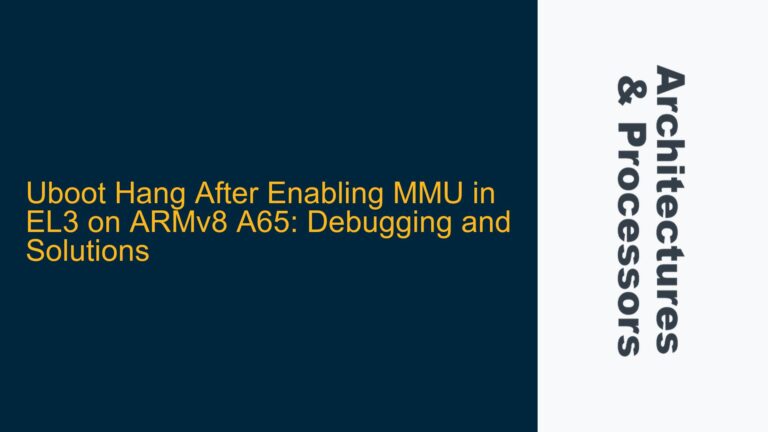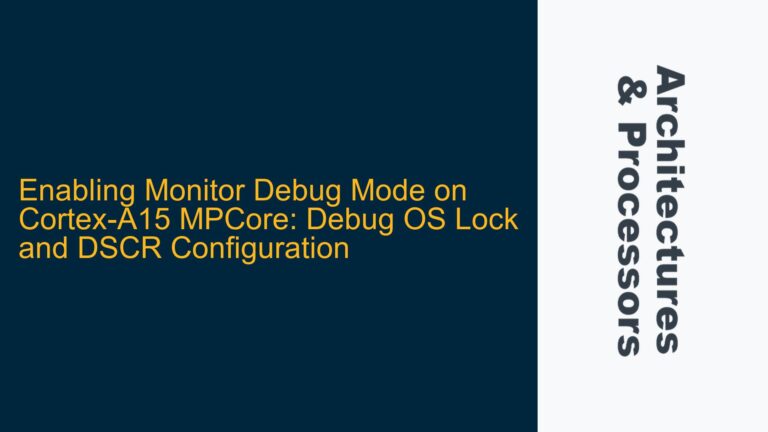Cortex-M7 System Address Map and AHBP Interface Behavior
The Cortex-M7 processor, like other ARM Cortex-M series processors, utilizes a predefined memory map that divides the 32-bit address space into specific regions for different purposes. One of these regions, the System segment, spans from 0xE0100000 to 0xFFFFFFFF. This region is designated for vendor-specific devices and system peripherals, and accesses to this region are handled differently compared to other memory regions. Specifically, accesses to the System segment are always performed over the AHBP (Advanced High-performance Bus Peripheral) interface, regardless of the configuration of the AHBP Control Register.
The AHBP interface is a critical component of the Cortex-M7’s memory system, designed to handle high-performance peripheral accesses. It is important to understand that the AHBP interface is not configurable in the same way as other memory interfaces, such as the AHB (Advanced High-performance Bus) or the AXI (Advanced eXtensible Interface). This means that any attempt to access addresses within the System segment will inherently use the AHBP interface, and this behavior cannot be altered by software configuration.
The Cortex-M7 Technical Reference Manual (TRM) provides a detailed description of the memory regions and their associated interfaces. Table 2-1 in the TRM, titled "Memory regions," clearly outlines the address ranges and the corresponding interfaces used for accessing those ranges. According to this table, the System segment (0xE0100000 to 0xFFFFFFFF) is explicitly marked as being accessed via the AHBP interface. This is a hardware-level design choice that ensures consistent and predictable behavior for system-level accesses.
Given this information, it becomes clear that any attempt to access an address within the System segment, such as 0xF0000000, will inherently involve the AHBP interface. This has implications for how software is written and how the memory system is configured. For example, if a peripheral device is mapped to an address within the System segment, the software must be aware that accesses to this device will always go through the AHBP interface, and this may affect the timing and performance of those accesses.
Potential Misconfigurations and Hardware Limitations
When dealing with the Cortex-M7’s memory system, there are several potential misconfigurations and hardware limitations that could lead to issues when attempting to access addresses within the System segment. One of the most common issues is the misunderstanding of how the AHBP interface operates and how it differs from other memory interfaces. This misunderstanding can lead to incorrect assumptions about how memory accesses are handled, which in turn can result in software that fails to function as expected.
Another potential issue is the configuration of the Memory Protection Unit (MPU). The MPU is a critical component of the Cortex-M7’s memory system, responsible for enforcing memory access permissions and attributes. If the MPU is not properly configured, it can prevent access to certain memory regions, including the System segment. For example, if the MPU is configured to mark the System segment as inaccessible or to enforce strict access permissions, any attempt to access an address within this region will result in a memory fault.
In addition to MPU misconfigurations, there may also be hardware limitations that prevent access to certain addresses within the System segment. For example, some Cortex-M7 implementations may not fully support all addresses within the System segment, or there may be hardware bugs that prevent certain addresses from being accessed correctly. In such cases, it may be necessary to consult the specific documentation for the Cortex-M7 implementation being used to determine if there are any known issues or limitations related to accessing the System segment.
It is also worth noting that the AHBP interface itself may have limitations that affect how addresses within the System segment are accessed. For example, the AHBP interface may have a limited bandwidth or may introduce additional latency compared to other memory interfaces. This can affect the performance of software that frequently accesses addresses within the System segment, and may require careful optimization to ensure that the software meets its performance requirements.
Configuring the MPU and Optimizing AHBP Interface Access
To address the issues related to accessing the System segment on the Cortex-M7, it is necessary to carefully configure the MPU and optimize the use of the AHBP interface. The first step in this process is to ensure that the MPU is properly configured to allow access to the System segment. This involves setting up the appropriate memory regions and access permissions in the MPU configuration registers.
The MPU configuration process typically involves defining a set of memory regions, each with its own set of attributes and access permissions. For the System segment, it is important to ensure that the region is marked as accessible and that the appropriate access permissions are set. For example, if the System segment is being used to access peripheral devices, it may be necessary to mark the region as device memory and to allow both read and write accesses.
Once the MPU is properly configured, the next step is to optimize the use of the AHBP interface. This involves understanding the characteristics of the AHBP interface and how it differs from other memory interfaces. For example, the AHBP interface may introduce additional latency compared to other interfaces, so it may be necessary to minimize the number of accesses to the System segment or to use techniques such as caching or prefetching to reduce the impact of this latency.
In addition to optimizing the use of the AHBP interface, it may also be necessary to consider the overall memory system design. For example, if the System segment is being used to access high-performance peripherals, it may be necessary to ensure that the memory system is designed to support the required bandwidth and latency requirements. This may involve using techniques such as memory interleaving or using multiple memory controllers to distribute the load across different memory channels.
Finally, it is important to thoroughly test the software to ensure that it functions correctly when accessing the System segment. This involves not only functional testing to ensure that the software behaves as expected, but also performance testing to ensure that the software meets its performance requirements. This may involve using tools such as performance analyzers or logic analyzers to measure the performance of the memory system and to identify any potential bottlenecks or issues.
In conclusion, accessing the System segment on the Cortex-M7 requires a thorough understanding of the memory system and the AHBP interface. By carefully configuring the MPU, optimizing the use of the AHBP interface, and thoroughly testing the software, it is possible to ensure that the software functions correctly and meets its performance requirements.
